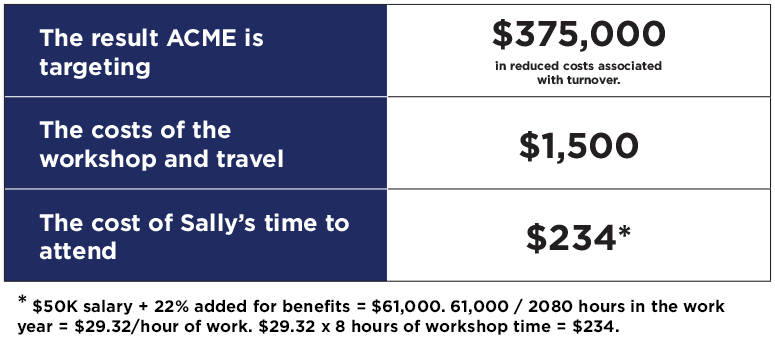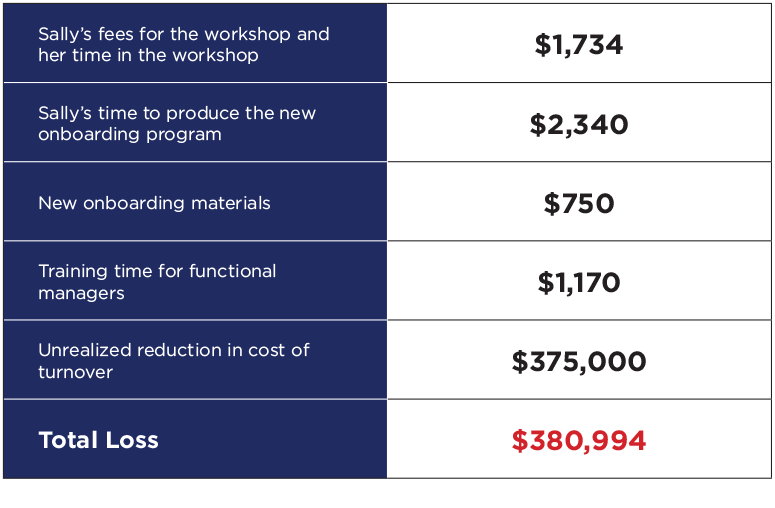There are many famous quotes about planning – or the failure to plan. I like this one as it relates to the implementation of anything:
“By failing to prepare, you are preparing to fail.” – Benjamin Franklin
Herman Ebbinghaus’s forgetting curve has gotten a lot of new buzz in the past few years. L&D practitioners and thought leaders talk about it a lot with the primary purpose of eliminating it through good instructional design. We ourselves have written about the forgetting curve and why it matters.
Reinforcement and spaced practice is a significant component to help someone actually use what you are trying to teach them. It’s one ingredient to ensuring successful implementation, but it’s not enough. You also must plan out everything else that needs to happen for your solution to really solve a problem. Excellent learning design and great content are important, but they miss the mark if we fail to consider what’s required for a solution to be implemented well and sustained over time.
When I do workshop sessions on implementation planning, I start by asking people to reflect on the Monday that will follow my session, which is typically their first day back at their jobs. These are the questions I ask participants to think about:
These questions help participants realize that they are no different than the learners for whom they design solutions. They have a tsunami of stuff awaiting them back at their jobs; so do their learners. The largest, most painful or loud thing gets their attention when they return to the work world; this fact also is true for their learners. Unless what someone learned at a conference, workshop or in an eLearning course solves an immediate pain point for them, it’s not likely to have much sticking power without lots of reinforcement and implementation support.
The cost of poor implementation versus the value of strong implementation
When I do sessions on implementation planning, I also ask participants to consider the cost of the forgetting curve or of poor/nonexistent transfer versus the benefits they hope to achieve. I am shocked at how few people can quantify their business problem or business opportunity. Saying people don’t know something is not a business problem unless you can quantify what it costs for people to not know something.
Here are a few stories to illustrate costs versus value:
Story 1: Solving a problem
Sally works for ACME corporation as its HR Generalist. ACME employs 100 people and wants to reduce its annual turnover percentage from 15% to 10%. Study after study shows that employee turnover costs companies a lot of money and ACME has taken note! Its average employee salary is $50,000, and it estimates it spends $75,000 to replace a single $50K employee.
ACME has done a stellar job of needs assessment and confirmed that poor employee onboarding is the primary reason for its turnover problem. Sending Sally to training on how to design a better employee onboarding program seems like a great solution. If ACME’s estimated cost is $75K per employee for turnover, its annual turnover cost is approximately $1.125M. If ACME can shrink turnover from 15% to 10%, it would reduce its annual turnover costs to $750K, a savings of $375K.
Let’s assume that the training Sally attends is brilliant. Its contents perfectly mirror what Sally needs to learn. She is focused during the workshop and takes copious notes. Did ACME get a good ROI on its investment in sending Sally to training?
We don’t know yet! Sally has implemented nothing; she has merely attended the training.
Here’s what we do know:

Effective implementation requires more than Sally participating in the training program. When she returns from training, these things also have to happen:
- She has to have the time to develop a new onboarding program. She also has to introduce it to the organization and anyone who will have a role in executing onboarding tasks. And she needs to prepare each person who will have a role so they can be successful in their implementation.
- Other managers, employees, and stakeholders have to buy in to what she is doing and support it.
- She has to have a budget for producing any materials required for it.
- Its importance within the organization needs to be reinforced to her as she develops and executes to avoid her time and attention being diverted elsewhere.
- She has to reinforce its importance to all others who have a role in onboarding.
If those things don’t happen or only happen in a limited way, the organization is not likely to see results from its investment in training.
Here’s what failure could cost the organization:

Conversely, if everything goes well with Sally’s implementation of what she learned, the organization is likely to reap a nice ROI, even if ACME doesn’t get its full 5% reduction in turnover. Even a 2% reduction in turnover would save ACME $150K/year, a decent return on an initial $5k investment.
Story 2: A business opportunity
SamplesRUs has a sales force of 250. It is doing a global launch of a software-as-a-service product that is priced at $20K/year. The target market is small to mid-sized hospitals. Its sales force is going to invest 20 hours of time into learning about the product’s features, benefits, and competitors. Formal training will help reps learn how to assess needs, demo the product, and deliver sales messages related to those needs.
SamplesRUs has done its market research and believes the sales team can generate $125M in revenue on this product in Year 1 with a full 80% of customers retained in Year 2 for renewals amounting to $100M plus additional new sales of another $100M for Year 2 sales of $200M. The customer need is clear. The product is excellent. Based on market analysis, the price point seems reasonable compared to other products.
What’s the cost if the forgetting curve post-training is high and SamplesRUs doesn’t do a great job thinking through post-training implementation? Beyond the hard costs of $200K for the global launch training experience for 250 reps, there is the loss from sales that never happened or renewals that didn’t occur. If reps only achieve 50% of first-year targeted sales, then about $65M in sales didn’t happen.
The reasons for this could be due to:
- No post-training reinforcement of the product knowledge covered during training particularly spaced out over time.
- Poor or nonexistent coaching from sales managers.
- No practice of the demoing skills acquired in training, which made sales reps fumble or be awkward when they got into sales situations.
- Poor communication with Marketing on the sales enablement tools that would best support reps.
- Weak or inconsistent efforts on the part of Marketing to generate leads that the sales reps could then call on.
- Weak or absent product support from the Customer Enablement group, which, in turn, leads to lower renewals than projected.
Training Program Implementation Planning
Implementation plans matter. Follow-through matters. If your organization is trying to design and implement a solution and you have not created any sort of implementation plan in conjunction with that effort, there is a huge risk that you will expend a lot and get little to no return on the expenditures.
Good implementation plans start with these things:
- An implementation readiness assessment with honest answers as to where your organization is ready to support an initiative and where it is not.
- An implementation strategy that defines the effort being undertaken, business outcomes it should produce, how outcomes will be measured, the stakeholders, the resources required, the target audience, current performance level, and desired performance level.
- A risk analysis and strategies for mitigating risks.
- A communication plan that considers all the people who need to know what’s going on, the appropriate distribution channels and message formats, and the frequency and timing of those messages.
- A change management plan that factors in what’s changing, how it’s changing, people’s anticipated reactions to the change, and what the change will cost them/how it will benefit them.
Use our Training Program Implementation Kit to help you start thinking through all the elements required for an effective solution implementation.











